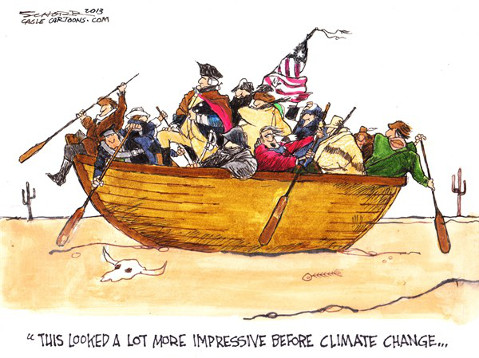Focusing on Climate Change
Bills Proposed to Enhance Public Health, Coastal Planning, and Water Supplies

When I am traveling up and down the Central Coast, I’ll often take Highway 154 through the Santa Ynez Mountains past beautiful Lake Cachuma, a source of drinking water for 220,000 people in southern Santa Barbara County.
But as the drought drags on, I — like many — am often struck by the sight of brush where once glistening lake water filled the cavernous space that is now much of Lake Cachuma. At full capacity just a few short years ago, Lake Cachuma is now just 28 percent full and depleting rapidly, despite significant conservation efforts. It’s not just a sight for sore eyes — despite best efforts we are running out of the drinking water that sustains our South Coast community. As many of you know, the water level is currently expected to drop below the gravity-fed intake tunnels by April or May this year. Once this happens, to ensure the remaining water gets to local residents, the Cachuma Operation and Maintenance Board has had to build an emergency pumping system to get the water up into intake tunnels, a project that has already cost $4.3 million.
From increased asthma and disease rates to sea level rise to more frequent and severe droughts, climate change impacts virtually every aspect of our lives. Lake Cachuma is a stark reminder of the reality that droughts like this one will only become more common and costly in the future due to climate change, and we must act now to prepare for the inevitable impacts not only on our water but on all aspects of our society and economy. In addition to addressing the root causes of climate change, I believe that we must work together to build more sustainable and resilient infrastructure, prepare public health systems for new challenges and higher demand, and implement smarter community plans that take into account local climate change impacts, such as sea level rise.
While progress has been slower than we need it to be on reducing the greenhouse gas emissions that are driving climate change, 2014 was still a big year of action in resilience and adaptation. President Obama led the way with his implementation of the Climate Action Plan and the State, Local and Tribal Leaders Task Force on Climate Preparedness and Resilience. The Task Force issued its final recommendations last year, which focused on how the federal government can modernize programs and policies to incorporate climate change into community planning and incentivize community resilience projects. The administration also launched a web-based Climate Resilience Toolkit to provide easy access to dozens of federal tools that can directly help planners and decision makers across the nation conduct their work in the context of a changing climate.
Of course, Congress must take action as well, which is why I reintroduced three bills this week to help local communities increase their resiliency to the impacts of climate change.
The Climate Change Health Protection and Promotion Act would provide our public health officials with the tools and resources they need to effectively track and prepare for the significant public health challenges that will come with climate change, like increased rates of asthma and other respiratory illnesses, vector-borne diseases, life-threatening temperatures, and food shortages.
The Coastal State Climate Change Planning Act would help coastal states like California plan and implement climate change mitigation projects. This legislation would address the challenges faced by coastal communities — home to more than 50 percent of the U.S. population and providing 58 percent of the country’s GDP — by supporting their efforts to voluntarily modify their current coastal management plans to address climate change impacts. States could use grant funding to implement adaptation strategies, such as identifying areas with the greatest risk and developing performance measures for protecting infrastructure and coastal ecosystems.
And finally, the Water Infrastructure Resiliency and Sustainability Act (WIRSA) would help drinking water, wastewater, and storm-water agencies prepare for the impacts of climate-related risks to our water supplies. Under this legislation, local agencies could receive matching funds for projects — like the pumping system at Lake Cachuma — that build resiliency to changing hydrological conditions. Other types of eligible projects include water conservation and efficiency measures, enhancing water management by protecting our water sources and green infrastructure, or facilitating the use of advanced technologies — such as water reuse and recycling — to increase available water supplies. Additionally, utilities could use funds to jumpstart local-level analyses to determine what future water resource challenges they will face.
Heat waves, droughts, wildfires, and other extreme weather events — some of the most troubling, costly, and immediate impacts of climate change — pose very real threats to our public health, infrastructure, and economy. We must do more to help our local communities prepare for these inevitable impacts, and we need to do it now. The futures of our children and grandchildren depend on it.
Lois Capps serves California’s 24th Congressional District in the U.S. House of Representatives.



